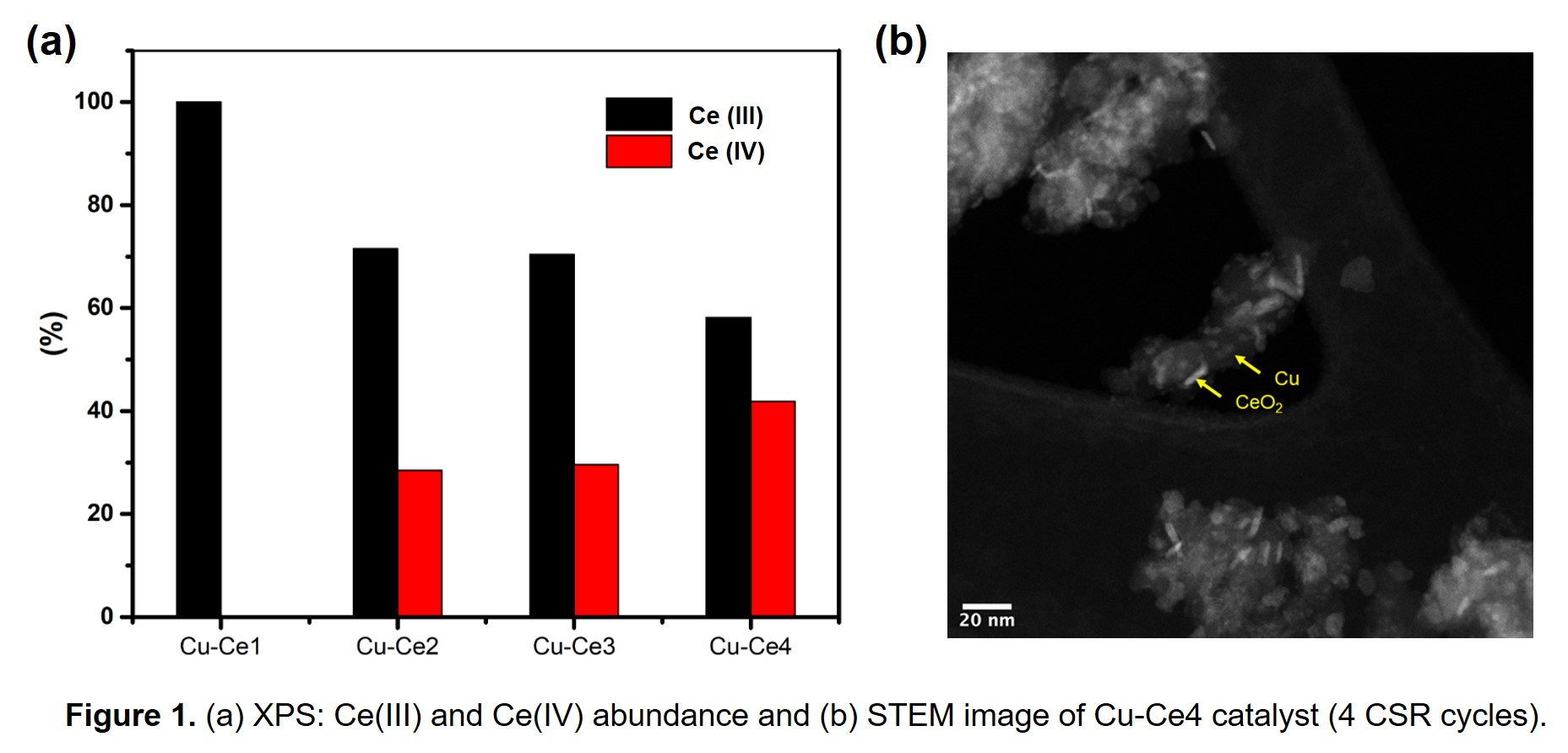(36f) CO2 Hydrogenation over Inverse CeOx-Cu Catalysts
AIChE Annual Meeting
2020
2020 Virtual AIChE Annual Meeting
Catalysis and Reaction Engineering Division
Thermal CO2 Upgrading
Monday, November 16, 2020 - 9:15am to 9:30am
Anthropogenic CO2 emissions are a major global concern, and this has led to great research traction in chemical transformation of CO2 into fuels and commodity chemicals. Some of these efforts have been focused towards the production of methanol, which is particularly challenging owing to the stability of CO2 and the prevalence of competitive side reactions. Graciani et al.1 reported one of the most promising catalysts for CO2 hydrogenation to methanol. They observed that a CeOx/Cu(111) catalyst promoted the formation of unstable carboxylate intermediate species that readily converted into methanol. Inspired by their findings, we synthesized supported inverse CeOx-Cu catalysts in an attempt to increase the number of interfacial sites for an improved hydrogenation of CO2. First, a Cu/SiO2 catalyst was synthesized by the strong electrostatic adsorption method. Then, after reduction, ceria (CeOx) was added onto the Cu nanoparticles by controlled surface reactions. Higher CeOx loadings were attained by successive cyclic depositions accompanied with intermediate reduction steps.
Interestingly, XPS results revealed a 100% abundance of Ce(III) after the first CeOx cycle, which is attributed to very small CeOx nanoclusters. This value decreased progressively with the number of cycles (Figure 1) due to an increased CeOx particle size. The Ce(III)/Ce(IV) ratio plays a critical role in the distribution of oxygen vacancies and adsorption sites over the ceria catalysts. At high CeOx loadings, STEM images revealed the presence of ceria nanorods near the Cu nanoparticles (Figure 2), an effect ascribed to the preferential anchorage of cerium to the silanol groups rather than the Cu surface. Remarkably, when studied in the hydrogenation of CO2, these catalysts not only provided methanol, but also ethanol and 2-propanol.
1. Graciani, J., Mudiyanselage, K., Xu, F., Baber, A.E., Evans, J., Senanayake, S.D., Stacchiola, D.J., Liu, P., Hrbek, J., Fernandez Sanz, J., Rodriguez, J.A. Science 345 (6196), 546 (2014).
